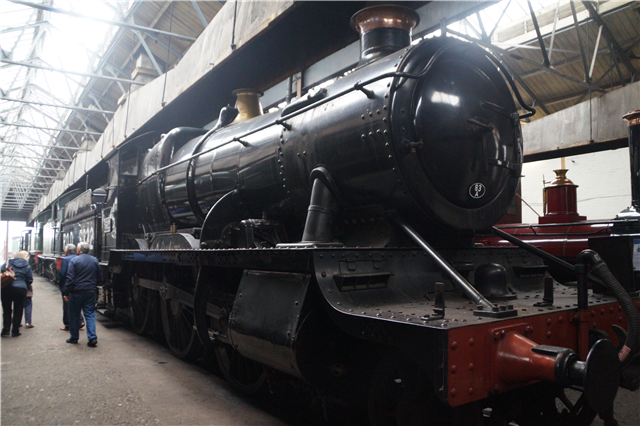The Great Western Railway 4300 Class is a class of 2-6-0 (mogul) steam locomotives, designed by G.J. Churchward for mixed traffic duties. 342 were built from 1911–1932.
In 1906 Churchward fitted a more powerful Standard No. 4 boiler to his successful 3100 Class 2-6-2T to create the GWR 3150 Class. These showed themselves to be successful locomotives, but their weight and water capacity meant that they tended to be restricted to suburban passenger traffic. Churchward was looking forward to the replacement of various of his predecessor’s 2-4-0 classes on secondary duties. In 1911 he therefore designed a tender version of the 3150 class which would be suitable for a wide range of intermediate duties.
The class was ‘a total synthesis of standard parts, using the outside cylinders of the Saint, the wheels of ‘31XX’ 2-6-2 tank and the No. 4 boiler, in its superheated form.’ No prototype was required as the fundamental design had proved itself. The locomotives quickly proved themselves to be so useful that they were produced more or less continuously in a series of batches over a twelve-year period (1911–1923), sometimes incorporating detailed differences. Two further lots were built in 1925 and 1932 by Churchward's successor, Charles Collett.
Between January and March 1928, 65 engines of 5300 series received additional weight on the pony truck, and 3000 was added to their running numbers, temporarily creating an ‘8300 Class’. However, the additional weight placed them in the Red category of route availability. From 1944 onwards there was a shortage of locomotives in the Blue category and so the additional weights were removed and the surviving locomotives resumed their original running numbers.
Although the class continued to be very useful and the final batch were still relatively new, 100 of the earlier examples were withdrawn between 1936 and 1939 and the wheels and motion of eighty were used for the Grange Class and twenty for Manor Class engines. It was intended to replace the whole class in this way but the advent of the Second World War in 1939 brought a temporary halt to withdrawals and the programme was never revived.
342 were built, but only two examples have survived to preservation. Additionally Large Prairie 5193 was converted to a "4300" in 2004
